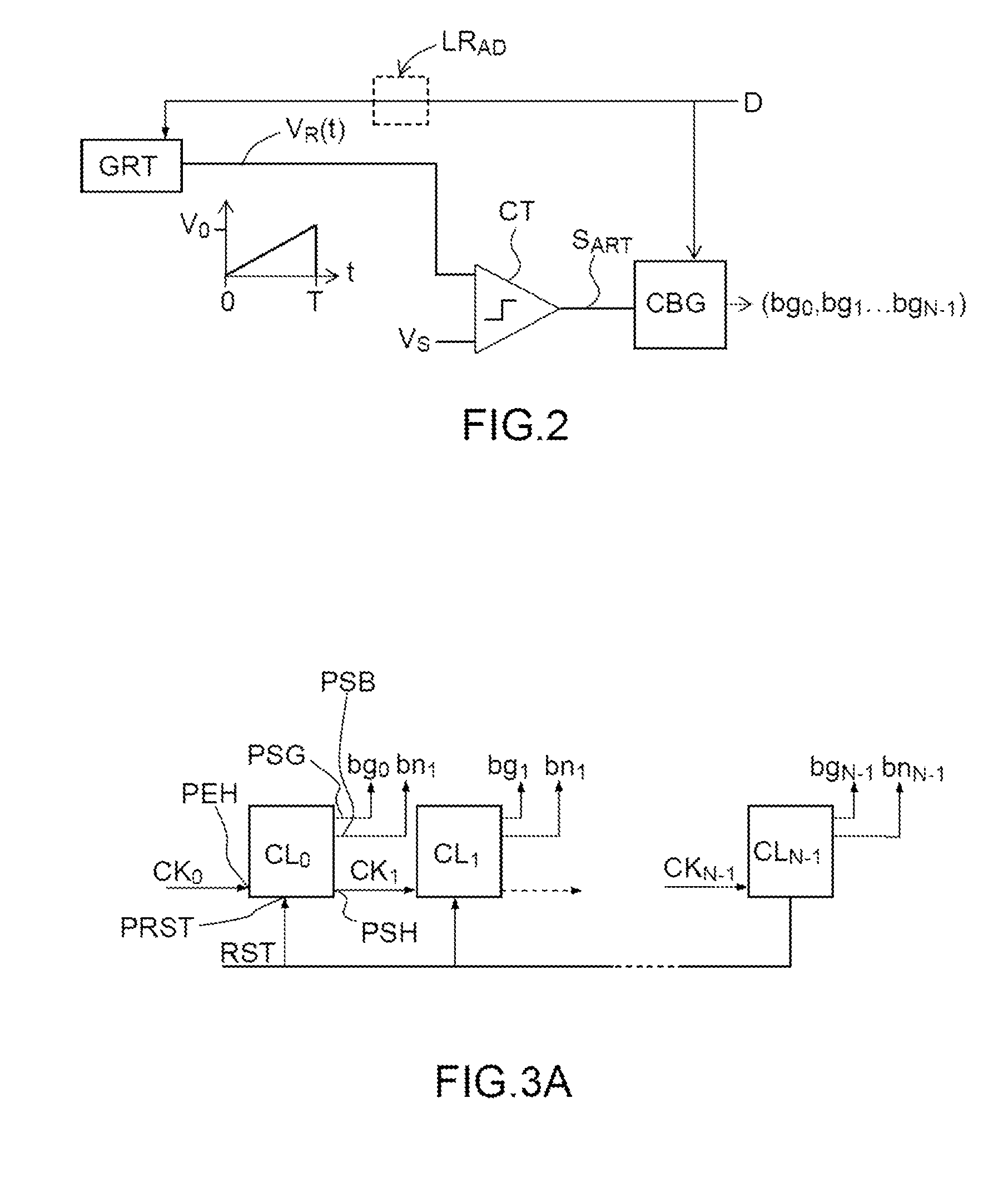Gray counter and analogue-digital converter using such a counter
- Summary
- Abstract
- Description
- Claims
- Application Information
AI Technical Summary
Benefits of technology
Problems solved by technology
Method used
Image
Examples
Embodiment Construction
[0032]FIG. 3A shows that a Gray counter according to the invention takes the form of a string of N>1 logic cells CL0-CLN-1 each having an input port PEH for an input clock signal (CKi for the cell CLi), an output port PSH for an output clock signal (CKi+1 for the cell CLi) and an output port PSG for a Gray count bit (bgi for the cell CLi). The last cell of the string may not comprise any output port for the clock signal. Each cell may also comprise an output port PSB for a “natural” binary count bit (bni for the cell CLi) which, as will be explained further on, with the aid of FIGS. 3B and 4, is generated as a “by-product” of the Gray counting process implemented for each cell. Advantageously, each cell also comprises an input port PRST for a reset-to-zero signal, typically common to all the cells.
[0033]The logic cells of the counter of FIG. 3A are strung together solely by way of the clock signal. Indeed, the output clock signal of each logic cell (except obviously the last) is pro...
PUM
 Login to View More
Login to View More Abstract
Description
Claims
Application Information
 Login to View More
Login to View More - R&D
- Intellectual Property
- Life Sciences
- Materials
- Tech Scout
- Unparalleled Data Quality
- Higher Quality Content
- 60% Fewer Hallucinations
Browse by: Latest US Patents, China's latest patents, Technical Efficacy Thesaurus, Application Domain, Technology Topic, Popular Technical Reports.
© 2025 PatSnap. All rights reserved.Legal|Privacy policy|Modern Slavery Act Transparency Statement|Sitemap|About US| Contact US: help@patsnap.com



